Shirohana Katana Sword (白花) specifications
- Hand-forged by our master swordsmiths.
- T10 steel blade, sharpened or unsharpened at choice, full tang.
- Hamon (刃文): genuine hamon chōji obtained by differential tempering.
- Scabbard (Saya 鞘): white lacquered wood with black dots, black ends (Kojiri and Koiguchi).
- Sageo (下げ緒): black.
- Handle (Tsuka 柄): genuine white stingray leather and wood.
- Tsuka-ITO (柄糸): black braided in a diamond pattern above the handle.
- Menuki (目貫): black dragon.
- Guard (Tsuba 鍔): black alloy, round and 80% solid with 6 petals carved on the mune side and a flower carved into the guard.
- Fuchi (縁): smooth black alloy.
- Kashira (頭): smooth black alloy.
- Habaki (鎺): smooth brass with kamon.
Dimensions
- Blade length: 27.95in
- Overall length including handle: 40.55in
- Length with scabbard: 41.34in
- Handle length: 10.43in
- Blade thickness: 0.28in
- Blade width: 1.26in
- Weight: 2.76 lb
- Package weight: 3.42 lb
Accessories
- Scabbard: Included
- Katana stand: Not included
Shirohana katana sword: design and finishes
The Shirohana (白花) katana sword evokes the purity and fleeting beauty of white flowers in Japanese culture. This name symbolizes the duality between apparent delicacy and inner strength, a fundamental concept in the art of Japanese swordsmanship. The white flower also represents spiritual renewal and transcendence, values cherished by the samurai.
Its T10 steel blade has a natural steel finish that highlights the genuine chōji hamon obtained through differential tempering, creating undulating patterns reminiscent of flower petals. The black alloy tsuba, round and 80% solid, is distinguished by its six delicately carved petals on the mune side and a chiseled flower in the center. The handle combines authentic white stingray skin (samegawa) with black Tsuka-ITO braiding in a diamond pattern, while the menuki represent a black dragon symbolizing protection. The white lacquered wooden scabbard (saya) punctuated with black dots creates a striking contrast with the black ends of the Kojiri and Koiguchi, complemented by a black sageo.

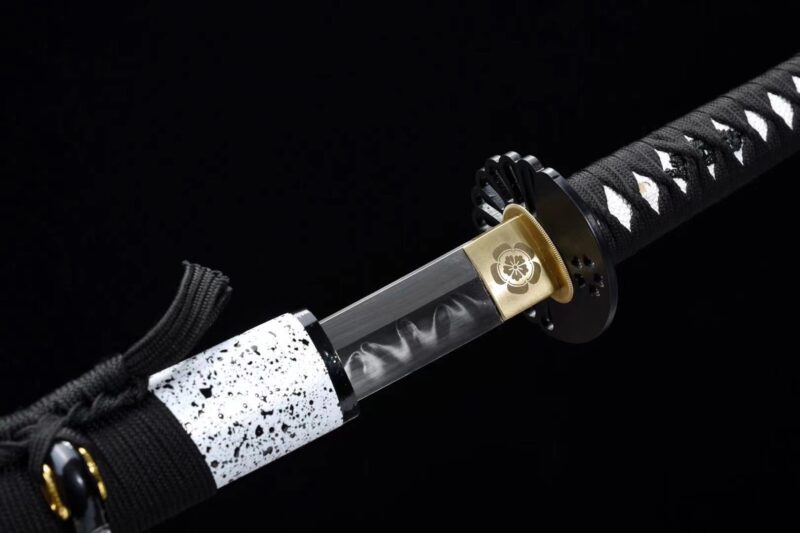

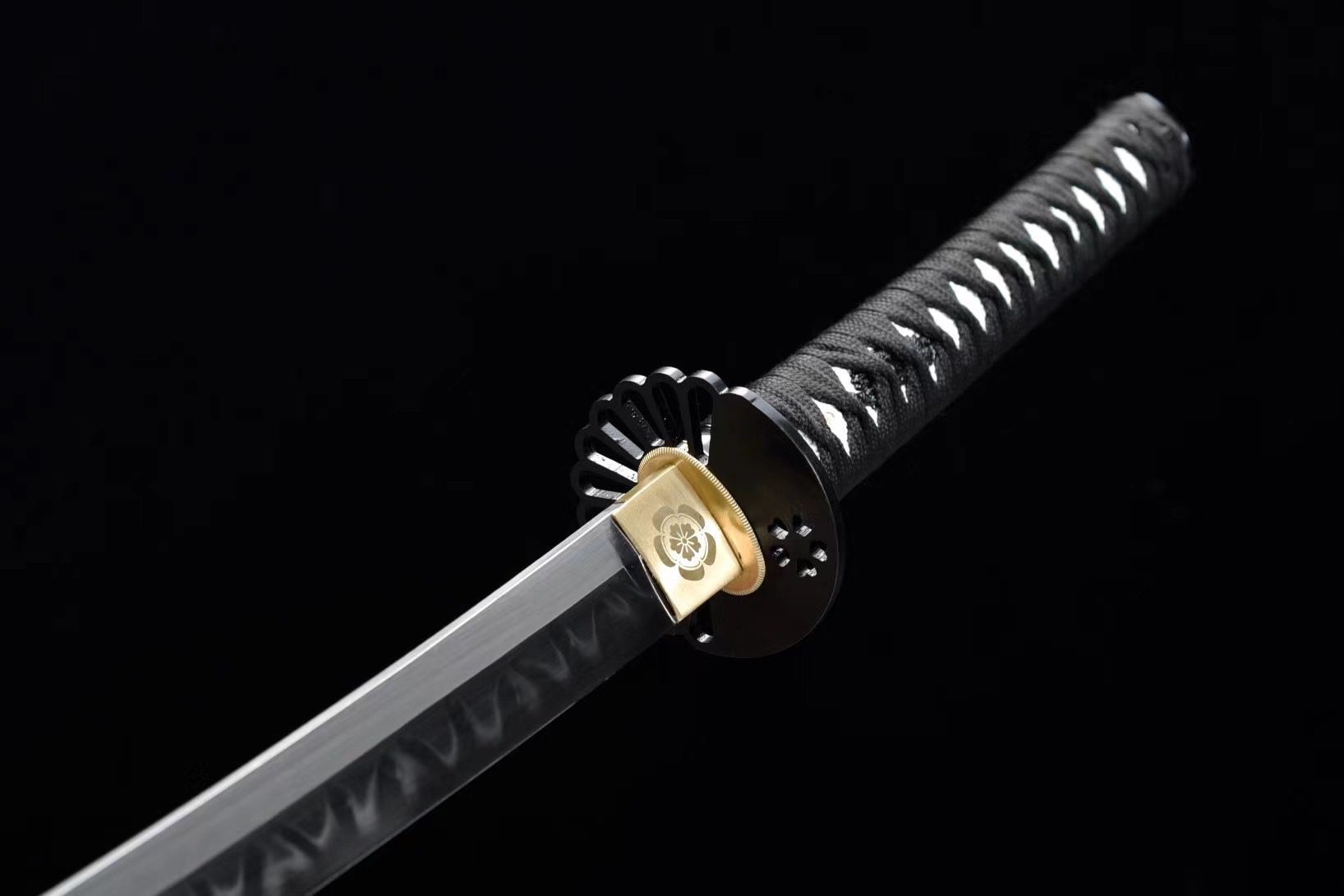
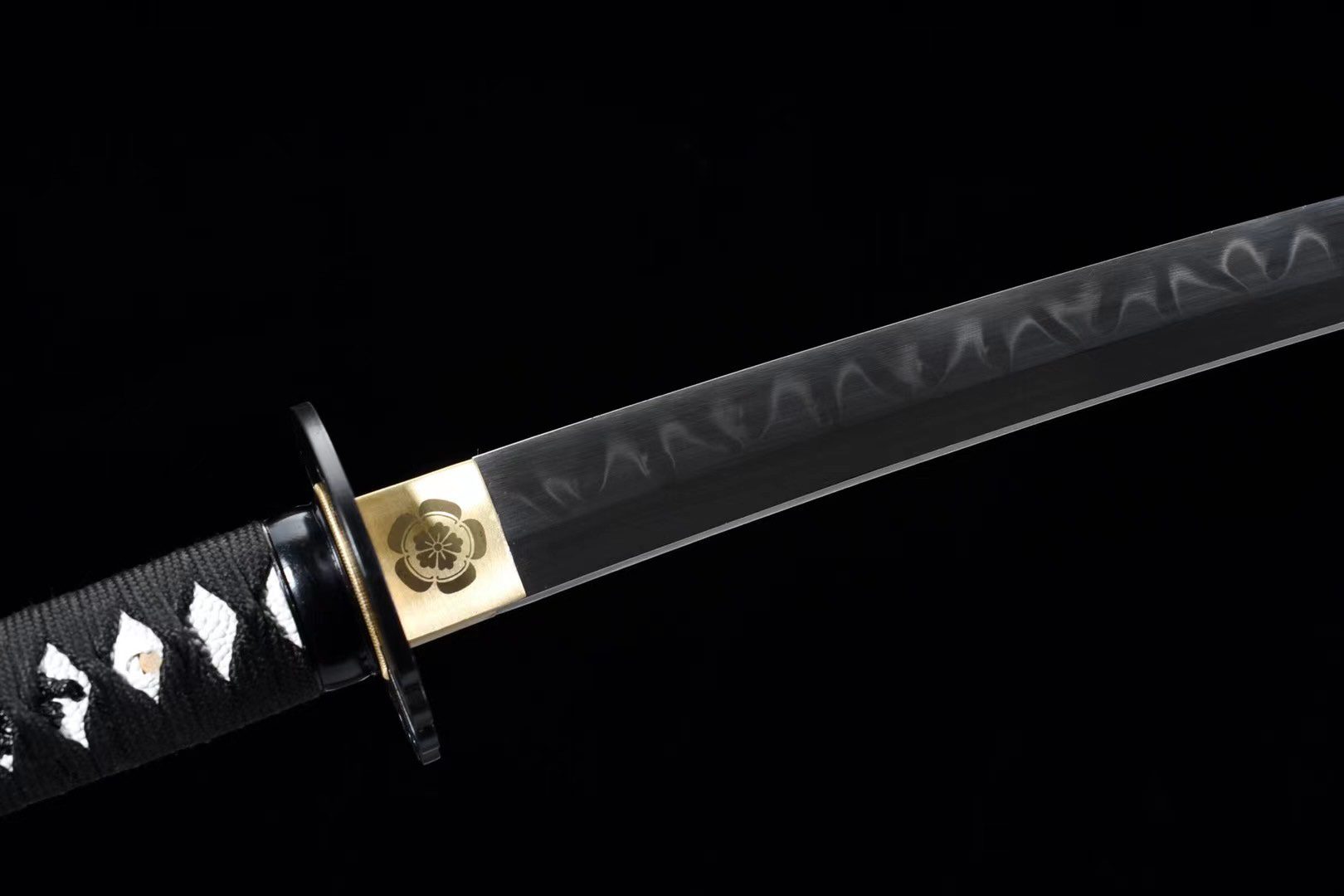
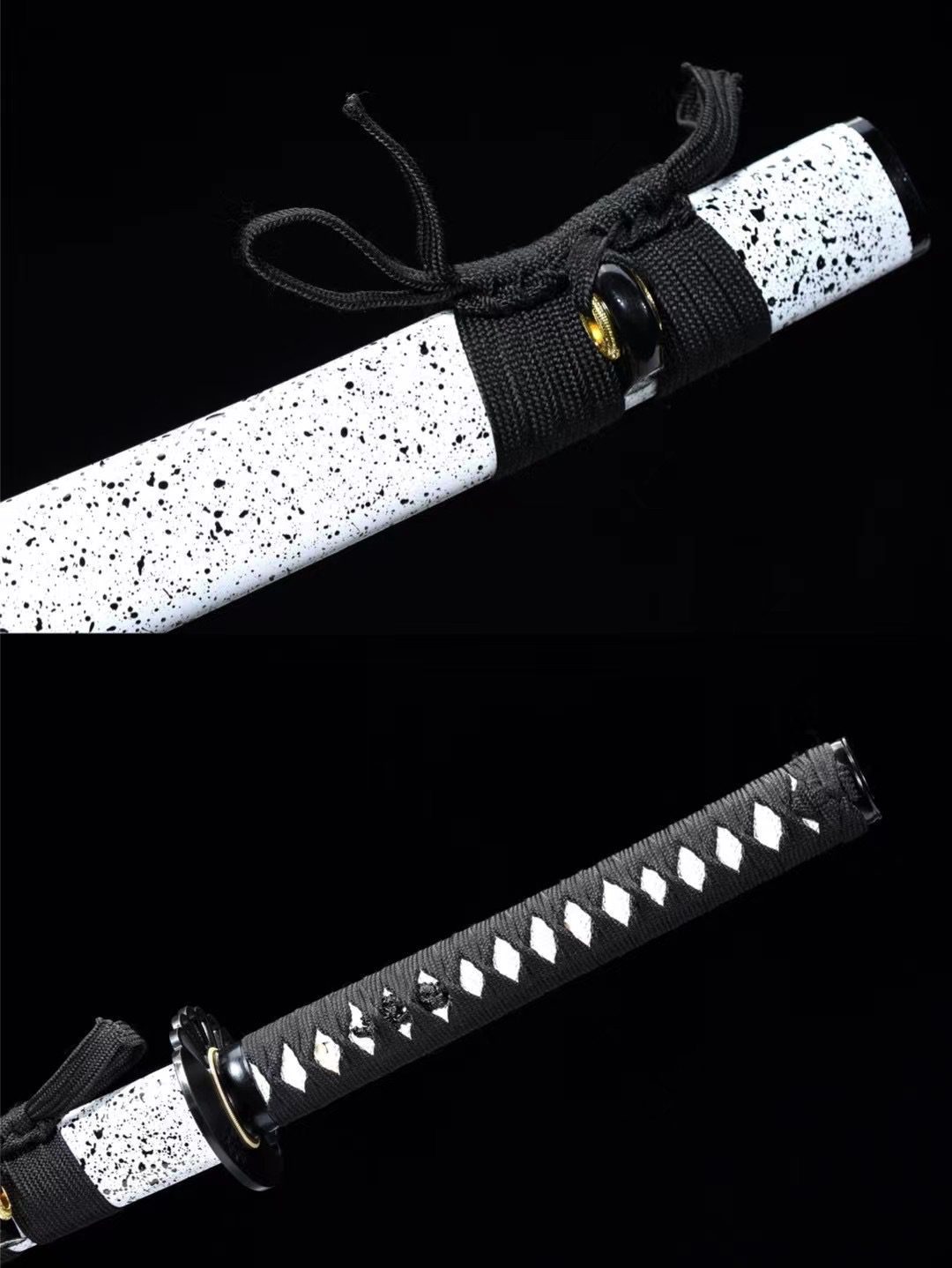
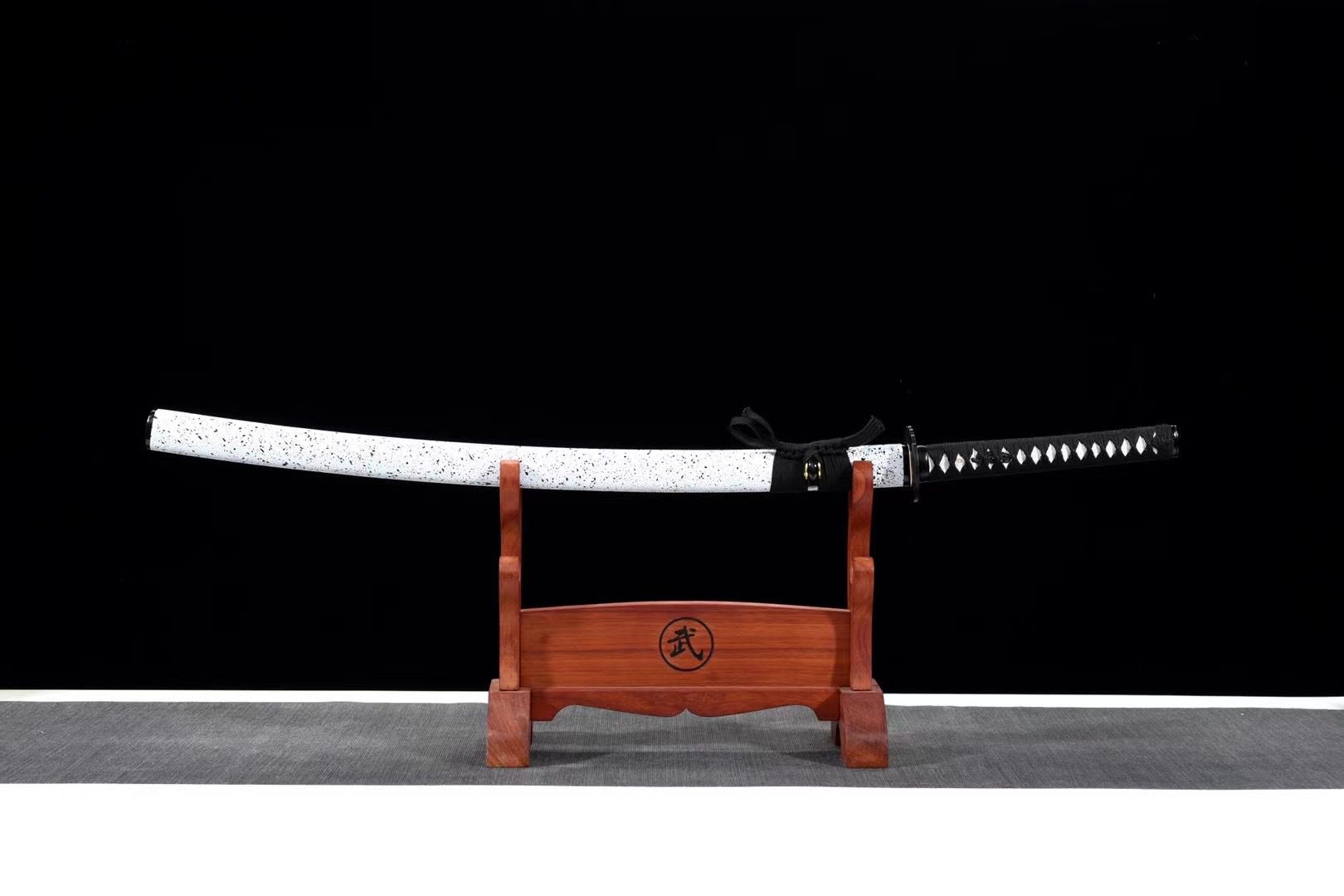
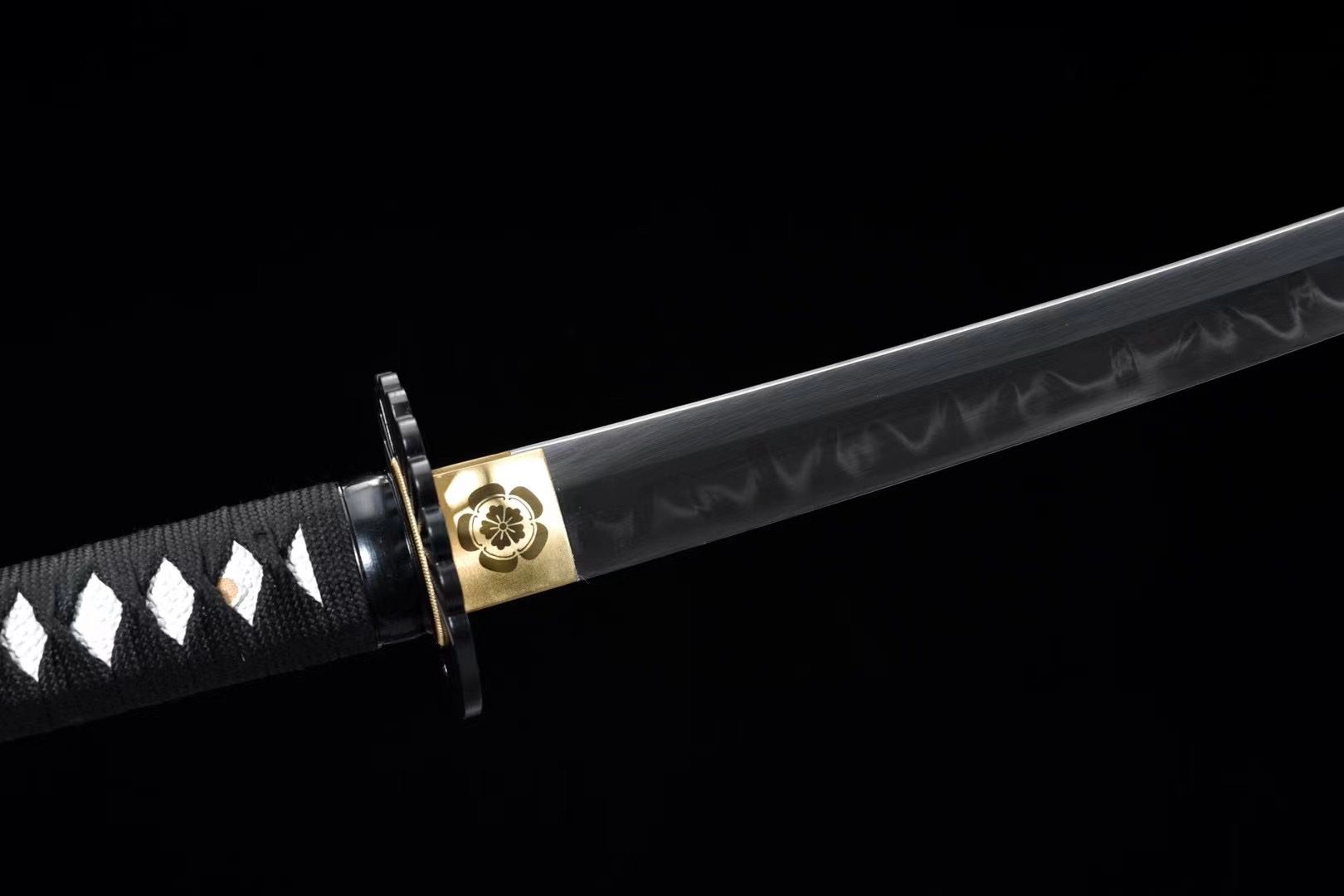

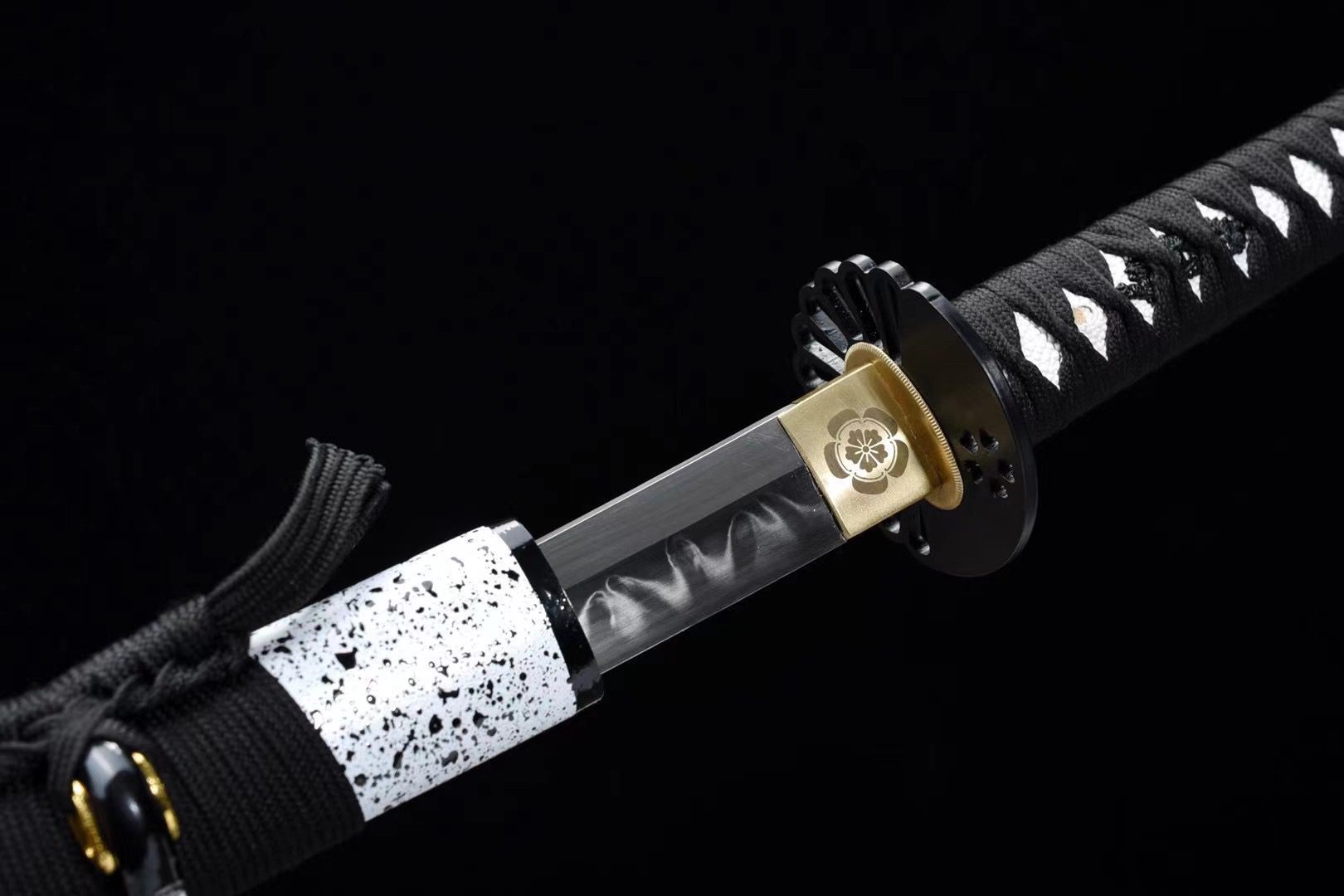
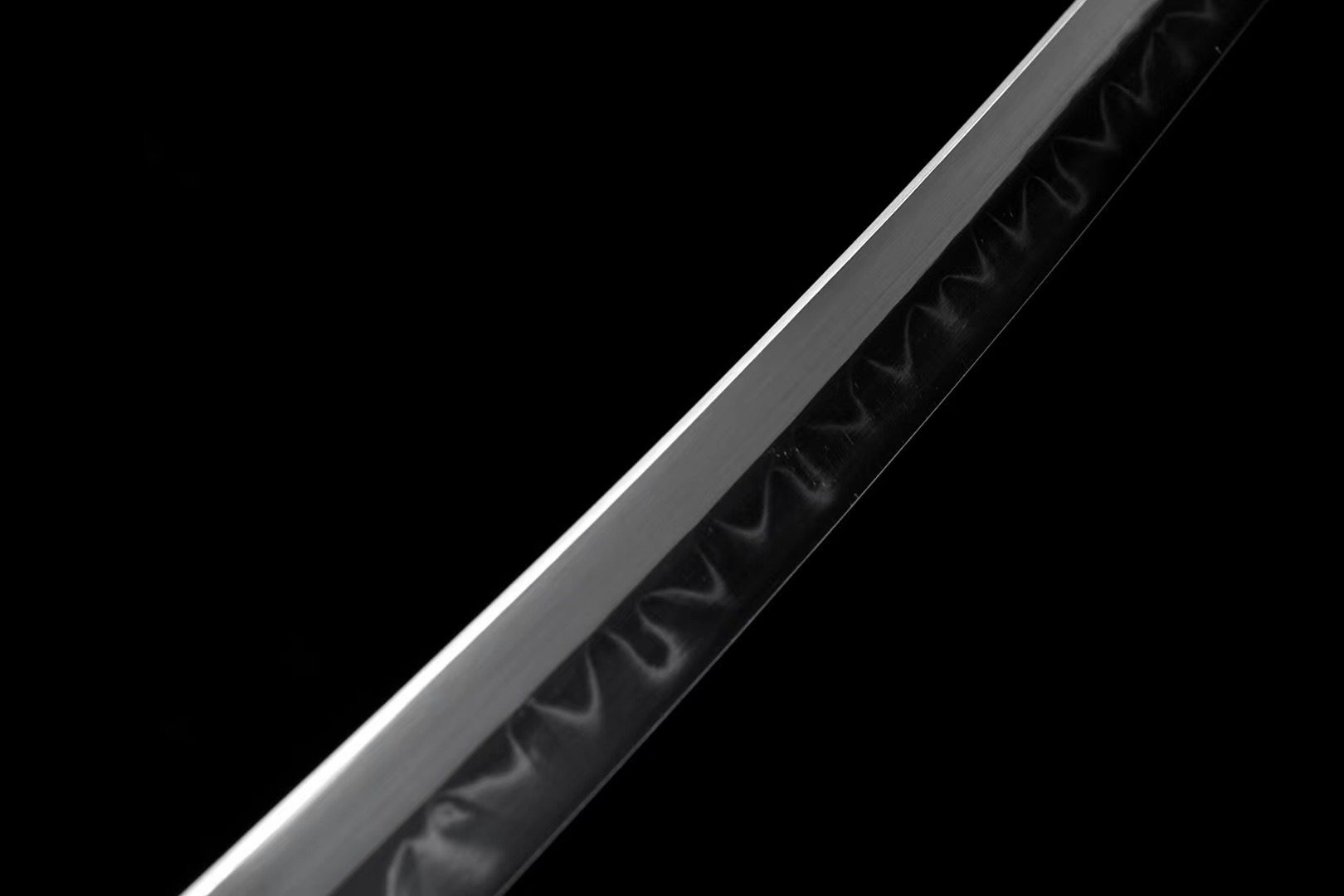
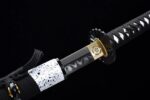

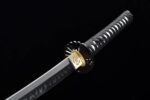
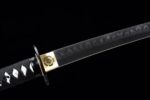
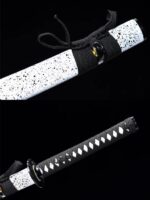
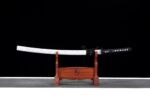


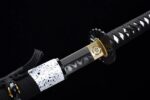
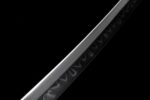
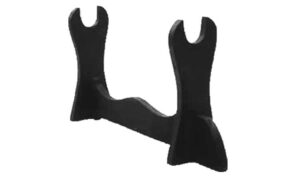
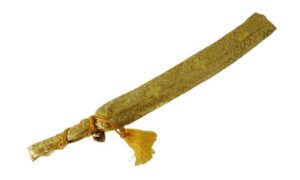
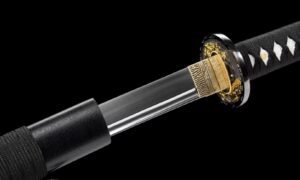
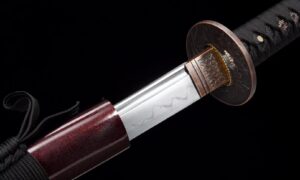

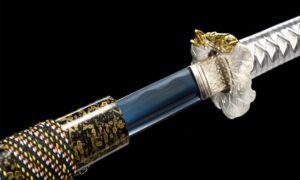
Reviews
There are no reviews yet